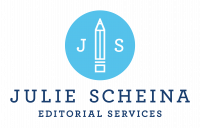One of the first business decisions authors make is deciding whether to pursue traditional publishing or self-publishing. Authors who choose traditional publishing typically begin by researching literary agents and publishers; authors who choose self-publishing typically begin by researching self-publishing services and platforms.
Today’s letter discusses some factors to consider when choosing a publishing path for a project. Over the next few weeks, I’ll delve more into the submissions process for traditional publishing (if you have any submissions-related questions, please feel free to email them to me!).
Identify Your Publication Goals
If you are deciding whether to pursue traditional publishing or self-publishing, I’d recommend first thinking about your publication goals. Ideally, how would you like your work to be sold? Is your goal for physical copies of your book to be in bookstores and libraries nationwide? If so, traditional publishing is most likely what you have in mind. Though publishing with a large traditional publisher certainly doesn’t mean that your book will be available in every bookstore or library, it does mean that your book will benefit from the publisher’s established distribution and sales networks.
On the other hand, is your primary goal to make your book available for sale online or to sell copies directly to readers yourself? If so, self-publishing might be a good fit. Self-publishing can allow authors with established networks of potential readers to reach those readers directly. For example, authors who speak, perform, or have another existing business can often leverage those platforms to sell their work. If you’ve ever purchased a cookbook from a local restaurant or a picture book from a local performer, you may have already seen this firsthand.
Time, Money, and Creative Control
Other considerations for choosing your publishing path are how much time and money you’d like to invest, as well as how important creative control is to you. Authors generally have some expenses with either path (websites, author photos, self-run giveaways, etc.). However, self-published authors oversee every aspect of their book’s publication, from fonts and cover designs to price points and marketing efforts. Consider whether you are likely to find this process invigorating or overwhelming. Do you already have expertise in these areas? If not, will you be able to take the time to learn? Will you hire experts to help you? Depending on the resources authors devote to areas like art, developmental editing, copyediting, proofreading, design, marketing, and publicity, self-publishing can be time-intensive and costly.
In contrast, traditional publishers employ teams of people that handle each of the above areas and more. While authors can always make requests and share feedback, publishers generally have the final say on (and bear the cost of) most publication-related decisions, from a book’s cover to publicity pitches to how many copies to print.
Moreover, the process of getting a traditional publishing deal—from researching and querying agents, to going on submission to publishers, to the publishing process itself—can be extremely slow and time-intensive. It’s not unusual for this process to take years, and there is no guarantee that going through the query process or signing with a literary agent will result in a traditional publishing deal. It’s also not unusual for authors to find a literary agent or to land a publishing deal with their second, third, or fourth manuscript, rather than for the first book that they submit.
Exploring Both Options
Depending on their goals, some authors choose to self-publish after pursuing traditional publication (e.g. if they aren’t able to find a literary agent or publisher). While authors may find success in both self-publishing and traditional publishing for different projects, it’s important to note that pursuing traditional publishing for a book that has already been self-published isn’t usually an option. Though there have been instances in which books that were initially self-published sold thousands of copies and were then acquired and re-released by traditional publishers, this is an extremely rare event. In most cases, agents and publishers will only consider unpublished work.
Earnings
Lastly, potential earnings are often part of the self-publishing versus traditional publishing conversation. After any upfront publication costs, self-published authors usually pocket the majority of their book’s earnings. Traditionally published authors usually receive an initial advance against royalties and then earn a royalty for each copy sold after their advance has earned out. Beyond print and ebook sales, a variety of factors can impact authors’ earnings, including translations, audiobooks, and other subsidiary rights. With either publishing path, most authors don’t earn enough solely from writing to support themselves. Many authors supplement their writing income with speaking, teaching, and other related work.
In short, traditional publishing and self-publishing each have their own advantages, frustrations, and pain points. What may be right for one book or author may not be the best path for others. If you are interested in learning more about self-publishing in particular, or publishing in general, Jane Friedman’s website has many helpful articles, including more considerations for deciding between self-publishing versus traditional publishing.
Your Editor Friend,
Julie
